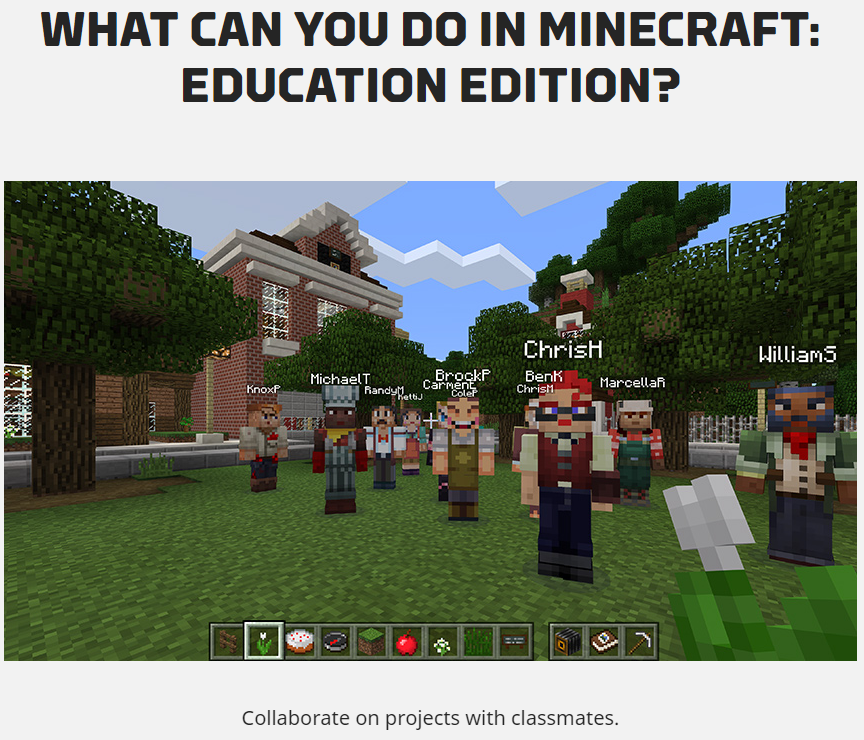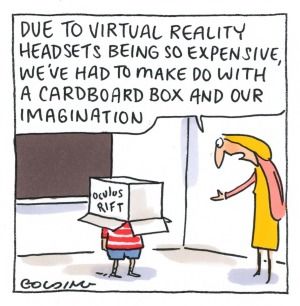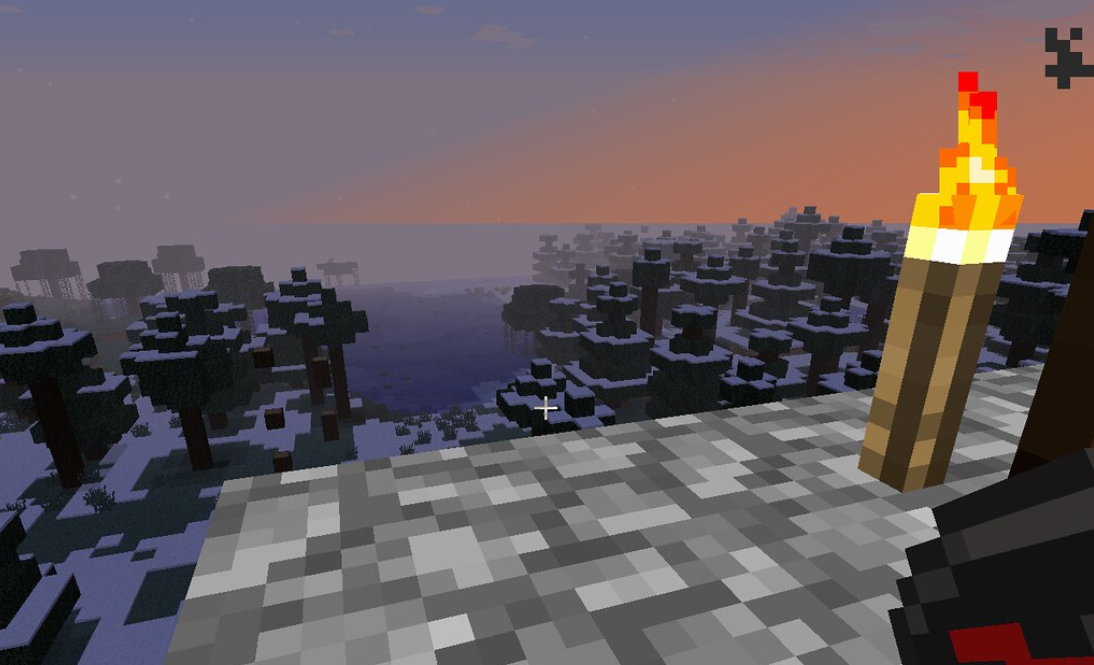When it comes to utilizing or integrating Virtual Reality (VR) and AR (Augmented Reality) my personal experiences have been somewhat limited. I have attended Professional Development Sessions on Minecraft EDU, and while I did not personally enjoy it due to the overwhelming feelings of dizziness and disorientation I experienced, my students and my own children have found it very engaging and entertaining from a gaming standpoint.
“Minecraft: Education Edition is an open-world game that promotes creativity, collaboration, and problem-solving in an immersive environment where the only limit is your imagination” (What is Minecraft, 2018). I have seen Minecraft EDU utilized as part of a Language Arts project, where the students used the platform to virtually create the setting of their story. I have also seen it utilized for teams designing and building online structures and exploring various rocks and minerals in Science.

Due to its collaborative nature, from a learning theory and an epistemological standpoint, Minecraft is very constructivist by nature. It does however also incorporate various aspects of cognitivism. It focuses on “identifying mental processes – internal and conscious representations of the world” (Bates, 2019, Chapter 2, Section 2.4.1).
The impact of Minecraft EDU and its potential use in schools is highlighted in the videos below:
Teaching STEM across the Northern Ireland Curriculum with Minecraft
How Cherokee County School District Uses Minecraft: Education Edition in K-12 Classrooms
There are also many other videos and testimonials on their website.

Minecraft EDU also provide a variety of teacher resources and free online courses to get your started. Since the COVID-19 pandemic, they have also created a Remote Learning with Minecraft Educator Toolkit which includes a variety of ready-made projects and highlights how educators can download the program and try it for free until June 30th!
One of the biggest challenges for initial implementation I see could foresee would be that of accessibility of all students. Especially those who do not have easy access to technological devices or WIFI. The other would be teacher buy-in. “Technology is changing the dynamics of education, especially the relationship between teachers and students. As educators begin to rethink the learning experience, we believe it will be important to also reshape educational spaces to support this evolution” (Kim, 2019). It is important for us to recognize that not all teachers are ready to take this leap of faith into an unknown world of Virtual Reality.

How Technology Is Changing Education Illustration: Matt Golding
References
Bates, A. (2019, October 10). Teaching in a Digital Age – Second Edition. Retrieved May 23, 2020, from https://pressbooks.bccampus.ca/teachinginadigitalagev2/
Kim, A. (2019, November 19). How Technology Is Changing Education. Retrieved May 30, 2020, from https://www.steelcase.com/research/articles/topics/technology/how-technology-is-changing-education/
Jacks, T. (2015, August 22). Virtual reality: How Oculus Rift could change the way students learn. Retrieved May 30, 2020, from https://www.theage.com.au/national/victoria/virtual-reality-how-oculus-rift-is-changing-the-way-students-learn-20150822-gj587v.html
What is Minecraft: Minecraft: Education Edition. (2018, September 12). Retrieved May 30, 2020, from https://education.minecraft.net/how-it-works/what-is-minecraft


Hi Keri,
Thank you for sharing your thoughts. I could not agree with you more that ” not all teachers are ready to take this leap of faith into an unknown world of Virtual Reality”. As we all know that , people are in a digital age. There is no doubt technology has provided a lot of conveniences to us. A lot of technologies have been applied into the practice of teaching. As a teacher, we must to consider this revolution in an objective side. Educational bring both advantages and disadvantages to us. We need to make sure whether the application is reasonable to be added into classes. As you mentioned, Minecraft is a interesting application, but not all teachers and students are comfortable with that. There are still a lot of issues which are relevant to humanism and others to explore.
Thank-you for your reply Eden!
There is so much to consider moving forward, from both an educational technology and a pedagogical lens. With this dynamic shift in all aspects of education, I look forward to a time when we can stop and catch our breath.
I’m not sure how you feel, but it has been information overload since March and I am concerned that we will see a dramatic increase in student and teacher burn-out…but rest assured there will probably be an APP for that! LOL!
Kind Regards,
Keri